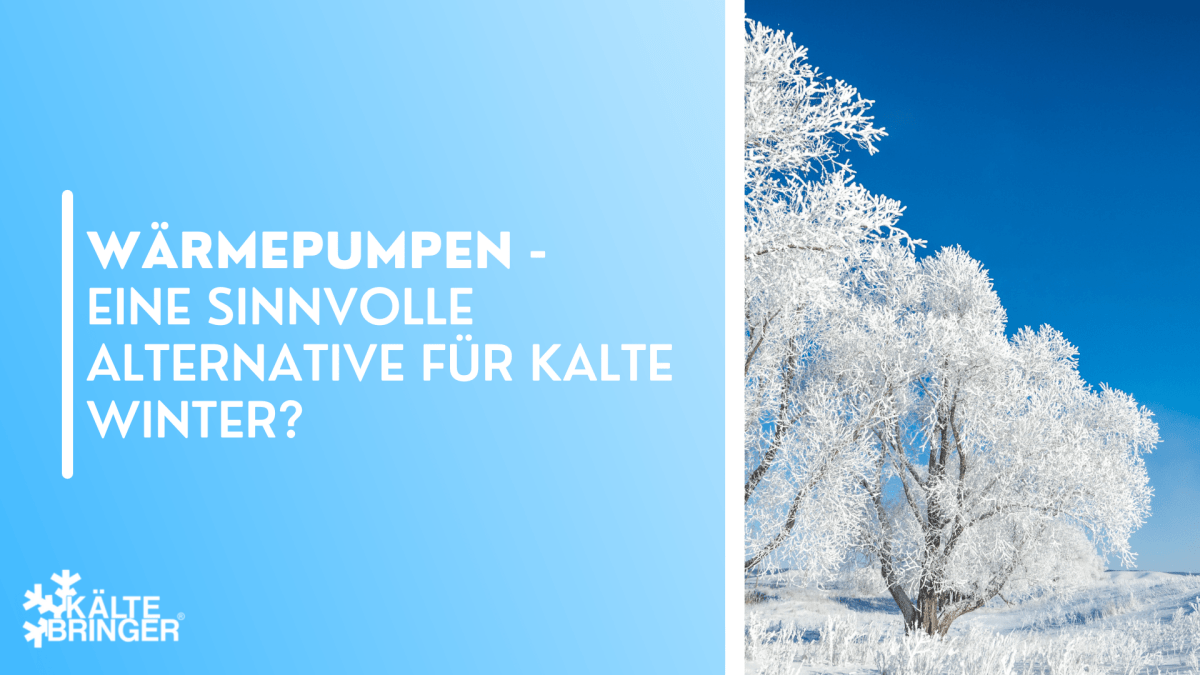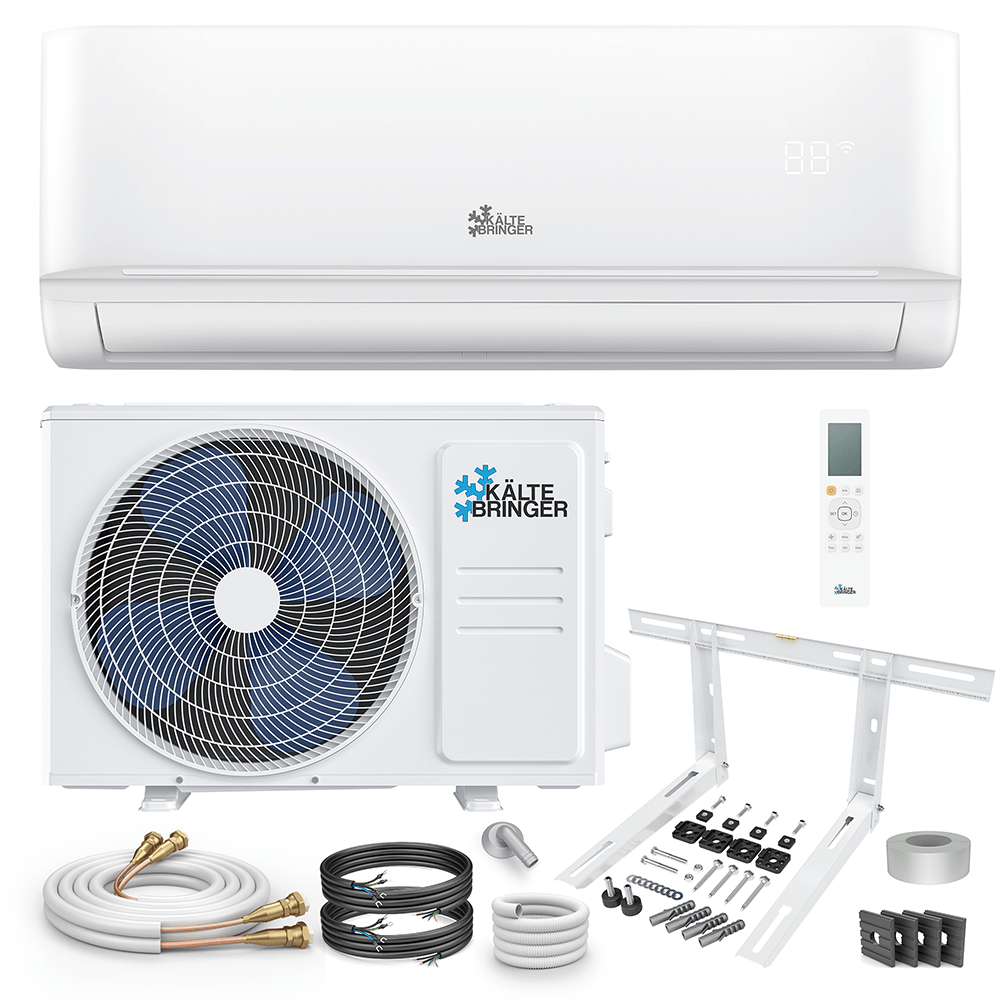Heat pumps can already be found in many buildings today. Whether as a brine-water heat pump outside the building or as an air-air heat pump in the form of an air conditioning system, a trend towards this sustainable type of heating has been evident in recent years. Nevertheless, some house and apartment owners hesitate to buy a heat pump. This is due to the myths and rumors that exist around the devices. We took a look at the negative claims for you!
What is a heat pump actually?
To make it easier for you to understand the following points, we want to explain briefly and concisely what a heat pump actually is and what the differences are. Depending on whether you live in your own home or in a rented apartment, there are different devices that might suit you best.
Basically, the function of a heat pump can be compared to that of a refrigerator. A refrigerator extracts the heat from its interior and gives it off to the environment, which is also the reason why the back of the refrigerator usually gets very warm. A heat pump, on the other hand, extracts heat from the outside area in order to transfer it inside the house.
A refrigerant circulates in the heat pump, which is vaporized by the heat drawn in and can thus be compressed. This compression creates a higher temperature, which can be used for heating. The heat pump then either transfers its heat to the heating circuit, i.e. a water pipe, or directly into the room air. There are different types of heat pumps:
- Geothermal heat pump: The geothermal heat pump is usually only used in new buildings. It requires a greater structural effort, since a probe must be drilled deep into the ground. It uses the heat that is stored in the ground and can therefore still produce heat even in the depths of winter
- Water heat pump: Here, the heat is drawn from the groundwater and compressed. It may not be possible to install this type of heat pump in nature reserves or other protected zones. The water heat pump is also quite complex to install
- Air heat pump: This type of heat pump can also be retrofitted to a building. It draws heat from the surrounding air and usually also releases it directly into the room air
That was a small basic course on the subject of heat pumps. If you would like to find out more about this topic, please visit the Kältebringer website under the Advice menu item . But now to our myths and what is really about them!
Heat pumps only consume electricity unnecessarily
Incorrect. Heat pumps used to work very inefficiently, but today things are very different. If you calculate the electricity costs for heating alone, then the heat pump is the undisputed number one, followed by pellet heating.
A heat pump in the Kaltbringer split air conditioning system, for example, requires only 17 percent electricity to achieve 100 percent heat output. The decisive factor for heat pumps is always the so-called SCOP scale, which indicates how much heat output is required for the amount of electricity used. In the case of Kältebringer heat pumps, the SCOP value is 6.1, which means that 6.1 watts of heat output is generated with one watt of electricity. Outstanding performance that no other type of heating can match!
Ground collectors disturb the fauna and flora
This rumor also persists. For a geothermal heat pump, so-called geothermal collectors are used in groundwater protection areas, which extract heat from the earth over a large area. Many people think that nothing grows above these collectors and that their own garden is gone. However, that is not true.
Useful plants such as lettuce or herbs can be grown above the collectors without any problems. Only deep-rooted trees or shrubs should be avoided for safety reasons.
Heat pumps do not produce enough heat
This rumor is also only partially true. Although it can happen that electrical reheating has to be carried out on particularly cold days, this is only the case from temperatures of -15 degrees Celsius if the heat pump concept has been well worked out. With a geothermal heat pump, heating is not a problem even at lower temperatures, since the ground always has the same temperature from a certain depth.
Tip: A heating element is installed in Kältebringer heat pumps, which switches on when the temperature is too low. This means that no further electrical heating is required.
Heat pumps can do nothing but heat
That's not true either. Air-to-air heat pumps are usually installed in split air conditioners, which can then also cool down a room in summer. In addition, such a system can also be used to control the humidity, which is particularly important in winter. The myth that heat pumps can only heat is therefore also unacceptable.
Heat pumps make loud noises
That's not true. You no longer notice anything from a ground or water heat pump that is connected to the heating circuit during operation. It then behaves in exactly the same way as a normal oil or gas heating system. Even air-to-air heat pumps are no longer really audible today, the operation is almost silent.
With proper sizing and regular maintenance, heat pumps make no real noise. The devices from Kaltbringer, for example, do not make any noise above 50 dB, even when they are in high demand.
Heat pumps are only suitable for new buildings
Here, too, we have to get involved, because this does not apply to all types of heat pumps. An air-to-air heat pump can also be retrofitted without any problems, as this only requires minor structural changes. The only important thing is that the building meets the energy requirements, for example that it is sufficiently insulated.
Only geothermal heat pumps are usually only used in new buildings, since the installation is associated with a great deal of effort. However, there are exceptions here too.
Heat pumps are always expensive
This argument is only true for some plants. A geothermal heat pump, for example, causes high costs due to its design and drilling, but it also completely replaces another heating system. In new buildings, these costs are normal and not exceptionally high.
The air-to-air heat pump in the form of an air conditioner has also become affordable today. You can get a high-quality device with high heating and cooling capacity from Kaltebringer for around 650 euros . These costs are amortized after just a few years thanks to the savings in heating.
Conclusion
Many experts agree that the heat pump is the heating system of the future. It is environmentally friendly, cheap to buy and extremely quiet in operation. In the vast majority of apartments, it can be retrofitted and thus ensures high savings in heating costs. Find out more about the different possibilities you have with a heat pump on the Kältebringer website today!








